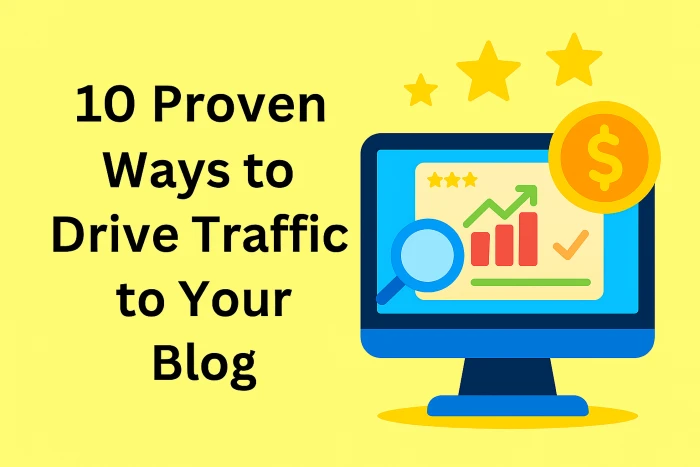1. Is Traditional Business Marketing Dead? The Shocking Truth Every Brand Must Know
For decades, traditional business marketing think TV ads, radio spots, flyers, and billboards dominated how brands reached their audience. However, in today’s digital-first world, these methods are struggling to stay relevant. Consumers have shifted their attention online, and with tools like ad blockers, streaming platforms, and social media feeds, traditional ads are easier to ignore than ever. The cost of traditional marketing is also high compared to its increasingly lower ROI. This shift forces brands to reevaluate their marketing strategies, asking if traditional approaches still serve their goals in 2025.
While traditional marketing isn’t completely obsolete, it’s certainly no longer the primary driver of growth. Brands that succeed today are embracing digital business marketing strategies that prioritize user experience, personalization, and data analytics. Tactics like content marketing, social media engagement, influencer partnerships, and email automation are outperforming print and broadcast in reach, efficiency, and targeting. The shocking truth? Businesses that fail to pivot from outdated marketing methods risk becoming invisible to modern consumers. The brands dominating now are the ones embracing digital transformation, meeting customers where they are online, mobile, and always connected.
2. Business Marketing in the Digital Age: What’s Working (and What’s Not) in 202
Business marketing in 2025 is fast-paced, highly targeted, and powered by data. What’s working right now includes personalized content, AI-driven campaigns, video marketing, and omnichannel strategies that provide a seamless experience across platforms. Social media platforms like TikTok, LinkedIn, and Instagram are crucial touchpoints where brands build relationships and trust. Meanwhile, SEO and high-value blog content continue to deliver long-term organic visibility and lead generation. These digital business marketing tools allow brands to track performance, optimize in real time, and make data-backed decisions that weren’t possible with traditional methods.
On the flip side, what’s not working anymore is one-size-fits-all messaging, generic email blasts, and hard-sell advertising tactics. Customers are more informed, more skeptical, and more empowered than ever. They expect brands to deliver value, not just push products. Traditional business marketing that interrupts rather than engages is quickly losing effectiveness. Cold calls, mass mailers, and banner ads without personalization feel outdated and invasive. To stay competitive, companies need to invest in understanding the customer journey and leveraging digital tools to create targeted, engaging, and authentic marketing experiences.
3. From Print to Pixels: Why Digital Business Marketing Is Crushing Traditional Ads
The shift from print to digital in business marketing has revolutionized the way brands communicate with their audiences. Print ads, while once the gold standard, now suffer from poor targeting, limited reach, and zero interactivity. In contrast, digital marketing enables real-time feedback, detailed analytics, and laser-focused targeting all at a fraction of the cost. Brands can now reach global audiences through SEO, PPC, email, and content strategies tailored to user behavior and intent. This transformation allows businesses to create personalized experiences that traditional ads simply can’t match.
Digital business marketing is not just about being online it’s about being strategic. Social media ads, influencer partnerships, and video content are delivering exceptional ROI because they engage users where they spend their time. Businesses can track every click, view, and conversion, making it easier to measure performance and scale what works. With AI and machine learning, brands can now automate campaigns, predict trends, and optimize messaging for different segments in real time. Compared to the static nature of print and broadcast, digital marketing offers flexibility, agility, and scalability all critical for modern business growth.
4. The New Rules of Business Marketing: Strategies That Actually Convert in Today’s Market
Today’s business marketing playbook looks nothing like it did a decade ago. The new rules are centered around authenticity, engagement, and measurable impact. Instead of simply broadcasting messages, smart marketers are creating conversations. Strategies like value-driven content marketing, community building on social platforms, and educational webinars are driving conversions and brand loyalty. Consumers no longer want to be sold to they want to be understood and offered solutions. The most successful brands are shifting from promotion to education, from noise to value.
Conversion in business marketing now depends on how well you know your audience and how effectively you solve their problems. With tools like CRM integrations, AI-driven segmentation, and customer behavior tracking, businesses can design highly personalized marketing funnels. Strategies such as lead nurturing emails, retargeted ads, and optimized landing pages turn interested visitors into paying customers. Traditional marketing focused on impressions; digital marketing focuses on actions. It’s not about who sees your brand it’s about who engages, converts, and stays loyal. And that’s a huge shift every business must adapt to.
5. How Smart Brands Are Using Content Marketing to Replace Traditional Business Tactics
Content marketing has become a cornerstone of modern business marketing because it builds trust, provides value, and drives organic traffic. Smart brands understand that people don’t want to be sold to they want help solving problems. By offering blog posts, videos, eBooks, podcasts, and other forms of valuable content, businesses can educate their audience and nurture long-term relationships. This kind of marketing not only boosts brand visibility but also positions a company as a thought leader within its industry.
Traditional marketing tactics like print ads and TV commercials often fail to resonate with today’s digitally-savvy consumers. In contrast, content marketing allows for two-way engagement, feedback, and personalization. Brands using this strategy effectively create content based on keyword research, customer pain points, and the buyer’s journey. This approach makes business marketing more relevant, more measurable, and more powerful. When done correctly, content turns visitors into leads, leads into buyers, and buyers into brand advocates something traditional methods could rarely accomplish. It’s no longer just about selling it’s about serving, and that’s how modern businesses are thriving.
6. Business Marketing Trends for 2025: What Forward-Thinking Companies Are Doing Differently
The landscape of business marketing in 2025 is dominated by personalization, AI, and immersive digital experiences. Forward-thinking companies are leveraging predictive analytics to understand customer behavior and tailor campaigns accordingly. They’re investing in voice search optimization, visual content, and zero-click SEO to improve discoverability. Tools like chatbots, automated email sequences, and dynamic website content ensure users receive a customized experience at every touchpoint. These brands aren’t just marketing they’re creating journeys built around the consumer.
In addition, the rise of sustainability and social responsibility is shaping how businesses market themselves. Modern consumers care about a brand’s values as much as its products, so transparency and ethical branding are now essential components of business marketing strategies. The companies winning in 2025 are those that not only adapt to technology but also align with the evolving expectations of their audience. They’re using omnichannel strategies to be present on every platform while maintaining consistent messaging. It’s not just about following trends it’s about anticipating them and being bold enough to lead the way.
7. Stop Wasting Money: Why Traditional Business Marketing Fails to Deliver ROI Today
Return on investment (ROI) is the ultimate metric in business marketing, and traditional methods simply aren’t delivering like they used to. Running a TV ad or placing a billboard may offer broad visibility, but it’s impossible to measure engagement, attribution, or real conversions. Compare that to digital strategies where you can track every click, email open, form submission, and sale. For cost-conscious brands, continuing to invest in outdated methods is like throwing money into a black hole with very little to show for it.
Digital business marketing offers a data-rich environment where every dollar can be tied to specific outcomes. Platforms like Google Ads, Facebook Ads, and LinkedIn provide detailed analytics on performance, allowing marketers to scale what works and eliminate what doesn’t. Email campaigns and SEO strategies are also providing better long-term ROI with much lower acquisition costs. Brands that continue to rely heavily on traditional methods risk falling behind not because they’re not trying hard enough, but because they’re using tools that no longer match the modern market. Efficiency, precision, and agility are the new benchmarks for ROI in business marketing.
8. Marketing Automation & AI: The Future of Scalable Business Marketing Strategies
Marketing automation is revolutionizing business marketing by eliminating manual tasks and streamlining lead generation, nurturing, and conversion. Tools like HubSpot, Active Campaign, and Mailchimp allow brands to automatically send emails, score leads, track behaviors, and move prospects through the funnel all without lifting a finger. This not only saves time but ensures that every user interaction is personalized and timely. Automation also supports scalability, making it possible for even small businesses to compete with large enterprises in terms of outreach and efficiency.
Artificial Intelligence (AI) is taking automation even further. From predictive analytics and chatbots to AI-generated content and dynamic ad targeting, business marketing is becoming smarter and more effective. Brands can now anticipate customer needs before they even express them, making marketing not just reactive but proactive. AI tools also allow for hyper-personalization, adapting messages in real time based on user behavior. As AI technology becomes more accessible, it will become the backbone of any future-proof marketing strategy. Those who adopt it early are not just optimizing they’re innovating, leading, and scaling their business marketing to new heights.
9. Influencer-Led Business Marketing: The Rise of Authentic Brand Advocacy
Influencer marketing is now a powerful force in business marketing, particularly because it taps into trust and relatability two elements traditional advertising lacks. People are more likely to buy from someone they follow and trust than from a faceless brand. Micro-influencers, in particular, offer niche authority and higher engagement rates. Smart businesses are collaborating with influencers who align with their brand values to deliver authentic messaging that resonates with targeted audiences.
The rise of influencer-led business marketing reflects a broader shift toward humanized branding. Consumers want transparency and genuine recommendations, not scripted commercials. Platforms like Instagram, TikTok, and YouTube have become prime spaces for influencer-driven product launches, reviews, and tutorials. Beyond just visibility, these partnerships drive engagement, social proof, and word-of-mouth all critical for building long-term customer loyalty. In 2025, brand advocacy through influencers isn’t just a trend; it’s a staple in modern marketing playbooks. If you’re not integrating influencer strategies into your business marketing, you’re missing out on one of the most effective ways to connect authentically with your audience.
10. Omnichannel Business Marketing: How to Be Everywhere Your Customers Are
The modern customer doesn’t just live on one platform they switch between social media, search engines, email, apps, and websites seamlessly. That’s why omnichannel business marketing is critical. It’s about delivering a consistent brand experience across all touchpoints. Whether a user engages with your brand on Instagram, via email, or through your website, they should receive a cohesive message that reinforces trust and encourages action. Businesses using integrated strategies see higher retention rates, better engagement, and improved conversion rates.
Omnichannel isn’t just multichannel it’s interconnected. A customer might see a Facebook ad, browse your product on mobile, and complete the purchase on desktop. Without an omnichannel strategy, this journey can become disjointed and frustrating. But with the right tools and planning, every step of that journey feels seamless. Platforms like Shopify, Clavijo, and Salesforce help unify data and personalize every interaction. In the current business marketing landscape, omnichannel is no longer optional it’s the standard for delivering value and capturing attention in a crowded digital world.
11. Emotional Branding vs Traditional Ads: What Modern Business Marketing Gets Right
Traditional ads often focus on features and pricing, but today’s consumers connect emotionally, not just logically. Emotional branding storytelling that taps into feelings like trust, hope, nostalgia, or belonging is now a dominant force in business marketing. People remember how a brand made them feel more than what it sold them. Successful companies are crafting narratives that align with their customers’ identities and aspirations, moving away from transactional messaging to relationship-driven communication.
Modern business marketing understands that trust and emotion drive conversions far more than repetition or flashy visuals. Brands like Apple, Nike, and Dove have mastered this by building powerful emotional connections. They’re not just selling products they’re selling ideals, communities, and lifestyles. Social media, user-generated content, and brand storytelling have made it easier than ever for businesses of all sizes to use emotion as a competitive edge. Compared to the cold detachment of traditional ads, emotional branding feels human and in a digital age, being human is your brand’s biggest advantage.
12. The End of Cold Calls: What the Modern Customer Journey Tells Us About Business Marketing
Cold calls and generic outreach are relics of the past. The modern customer journey begins online through search engines, social media, and peer recommendations. By the time a potential client talks to your sales team, they’ve already researched your brand, read reviews, and compared options. This evolution requires a fundamental shift in business marketing: from interruption to attraction. Inbound strategies, fueled by SEO, content marketing, and automation, are far more effective than outdated cold outreach tactics.
Today’s business marketing must align with how people discover, evaluate, and choose brands. That means creating a strong digital presence, optimizing for mobile, and offering resources that guide the buyer through every stage of the journey. Whether it’s an educational blog post, a downloadable guide, or a live webinar helpful content attracts qualified leads naturally. The end of cold calls doesn’t mean the end of outreach it means outreach must be smarter, more personalized, and built on value. The brands winning today are the ones that respect the customer journey and align their marketing efforts accordingly.





3 Comments